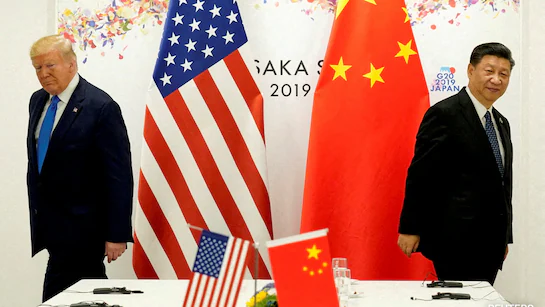In a significant BRICS Power Response, China has clarified that the BRICS alliance is a platform for cooperation, not confrontation, following U.S. President Donald Trump’s recent warning. Trump had threatened an additional 10% tariff on countries that, in his view, support “anti-American” policies—clearly signaling groups like BRICS.
This BRICS Power Response came swiftly after Trump’s announcement that, starting July 7, new tariffs would be detailed following the expiration of a 90-day freeze on trade duties. This move by the U.S. risks reigniting global trade tensions, especially with emerging economies that make up BRICS.
BRICS Power Response Emphasizes Unity and Mutual Growth
China’s Foreign Ministry spokesperson Mao Ning stated that BRICS is not aimed against any specific country. Instead, the BRICS Power Response highlighted that the organization fosters cooperation among emerging markets and developing nations.
Mao emphasized that BRICS promotes openness and shared benefits, not division. “There are no winners in trade wars,” she added, reiterating China’s opposition to protectionism and unilateral tariffs.
Trump’s Tariff Policy and the Global Implications
The BRICS Power Response comes at a crucial time. Trump’s administration appears to be reactivating its aggressive trade stance. By linking tariffs with foreign policy alignment, Trump has taken a step that could alienate not only BRICS nations but many others who prefer multilateral diplomacy.
This BRICS Power Response warns that such economic pressure may disrupt global supply chains and undermine decades of free-trade frameworks built under the World Trade Organization (WTO).
BRICS Summit 2025 and Global South Concerns
The 17th BRICS Summit, held in Rio de Janeiro, Brazil, served as the perfect backdrop for this unfolding economic clash. In this summit, Indian Prime Minister Narendra Modi sharply criticized outdated global institutions like the United Nations Security Council and the WTO.
He likened these bodies to “network-less mobile phones”—present but functionless. His remarks formed a core part of the BRICS Power Response, highlighting the need for inclusive global reforms that empower developing nations.
China’s Vision in the BRICS Power Response
Chinese Premier Li Qiang also contributed to the BRICS Power Response by asserting that BRICS must lead reforms to make global governance more fair and effective. His focus was not only on resisting U.S. trade threats but on restructuring global power balances.
This vision aligns with China’s broader Belt and Road Initiative and its call for a multipolar world. The BRICS Power Response sees BRICS as not just an economic bloc but a platform for systemic change.
BRICS Power Response Challenges Protectionism
In a not-so-subtle rebuke, the BRICS joint statement condemned unilateral tariff policies without naming Trump or the U.S. directly. The declaration labeled such economic pressures as harmful and counterproductive.
By doing so, the BRICS Power Response brings attention to how protectionist strategies—though politically appealing—can destabilize long-term economic growth.

Expansion of BRICS and Its New Power
The BRICS Power Response gains even more weight when considering the group’s recent expansion. Originally comprising Brazil, Russia, India, China, and South Africa, the group added Iran, Egypt, Ethiopia, and the UAE last year. Indonesia is expected to join in 2025.
This expanded coalition represents a significant portion of the world’s population and economic activity. The BRICS Power Response is, therefore, not just symbolic but potentially transformative in reshaping global trade and political alignments.
Strategic Messaging in the BRICS Power Response
What sets this BRICS Power Response apart is its careful messaging. It avoids direct confrontation while firmly asserting principles. China, India, and Brazil all reinforced their commitment to peaceful cooperation, trade equality, and institutional reform.
This measured response reflects BRICS’s intention to shape, not shatter, the global order. By avoiding inflammatory rhetoric, the BRICS Power Response earns credibility on the world stage.
What Comes Next After the BRICS Power Response?
The global community now watches closely. Will Trump’s administration double down, or will it revise its stance after the strong BRICS Power Response?
Much depends on the reaction from the WTO and the G20. However, one thing is clear—the BRICS Power Response signals that emerging economies are no longer willing to accept economic coercion without resistance.
Fintech Sector Must Focus On Education And Protection: DFS Secretary
